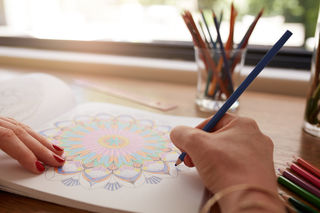Psychology
Drawing Is a Simple, Powerful Way to Improve Your Mood
Bad day? Pick up a pencil and draw this way to feel better.
Posted September 12, 2016

Digital drawing tools, adult coloring books, painting events at bars. Art is making a comeback as a hobby for grown-ups. People who wouldn’t normally consider themselves “artistic” are rediscovering the feel-good effects of drawing, coloring and painting. But what is it about making art that puts people in a better mood?
To answer that question, a study in the August issue of Psychology of Aesthetics, Creativity and the Arts compared two popular theories in a head-to-head test. Lead researcher Jennifer Drake, Ph.D., an assistant professor of psychology at Brooklyn College, sums up the theories this way: “Does drawing serve as a way to vent emotions and thereby work out conflicts and tensions? Or does it serve as a form of escape?”
The findings from Drake’s study came down firmly in one camp. “You might assume that drawing works on mood by allowing people to express negative emotions and thus release them. This is the catharsis view of art,” Drake says. “But we find something different: What works best for mood repair is distraction from negative emotions through drawing. This is consistent with the emotion regulation literature, which shows that getting people to think about something other than their negative emotions is more effective [than venting them].”
A Thumbnail Sketch of the Research
Drake’s study included 40 college students. “We asked people to recall the saddest event that had ever happened to them, guiding them through a visual imagery task in which they focused on the sights, sounds, thoughts and feelings associated with the event,” Drake says. “Then they drew for 15 minutes.” For the drawing activity, students were randomly assigned to one of two groups:
- Drawing to distract. This group was asked to draw something completely unrelated to the sad event. Specifically, participants were instructed to look down at their own shoes and draw them. They were told, “Use the drawing activity as a way to help you look closely.” The unstated goal was to distract them from unhappy thoughts and feelings.
- Drawing to express. This group was asked to draw about the sad event they recalled. They were told, “Use the drawing activity as a way to express your feelings.”
The whole procedure was repeated on four consecutive days. At various points in the process, participants filled out questionnaires to measure positive and negative emotions.
The researchers found that drawing to distract improved mood more than drawing to express. This held true both after a single drawing session and after four daily sessions. “We are now examining whether the benefits of drawing extend over longer periods of time; for example, one month,” Drake says. She believes that, if done regularly, drawing to distract could be a valuable part of a person’s emotional self-care routine.
Draw Your Shoes, Boost Your Mood
Drake’s research offers a blueprint for anyone who enjoys drawing as a way of soothing difficult emotions, such as sadness, nervousness, frustration and anger. She’s quick to note that drawing alone is no substitute for professional treatment when needed. But as an antidote to normal bad moods—or an adjunct to treatment for a mental health disorder—it’s worth a try.
Of course, this is only one possible purpose of creating art. If you’re an artist who wants to share your vision of human suffering with the world, that’s an entirely different thing. But if you’re someone who just wants to feel happier in the moment and nurture your emotional well-being, here are some tips:
- Be mindful of the drawing process. Focus on and observe what you’re drawing at the moment, and let go of whatever you were thinking and feeling earlier.
- Choose an emotionally neutral subject. The aim is to draw something that takes you away from your current bad mood. Sketching a real-world object such as shoes is one possibility, but it’s not the only way to go. Drake says that, in other research, “we have also asked people to draw objects from their imagination or draw designs.”
Drawing is open to everyone—artistic skill and expensive tools are optional. It’s fun. And it’s fast. “You can get a positive effect with just 15 minutes of drawing,” Drake says. “Drawing to distract is a simple and powerful way to elevate mood, at least in the short term.”
Linda Wasmer Andrews is a writer who specializes in psychology and health. She wrote here earlier about doodling as a strategy for focusing attention during phone interviews. Connect with her on Facebook and Twitter.




